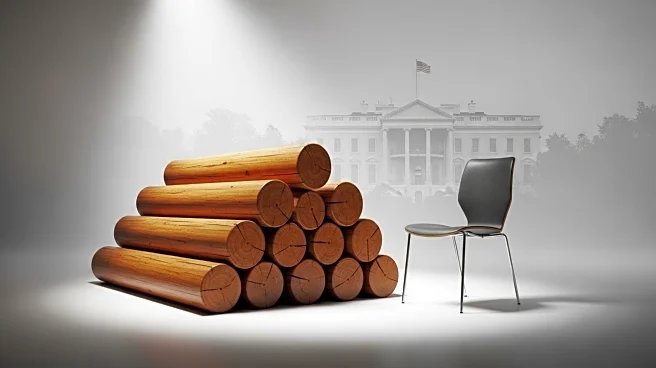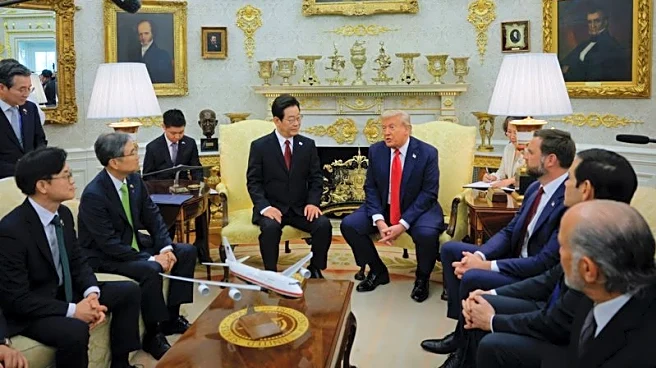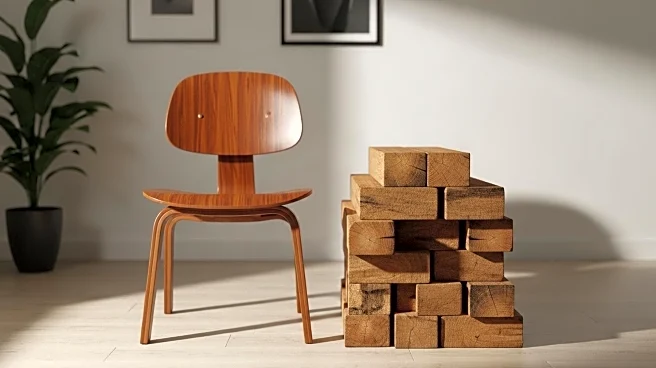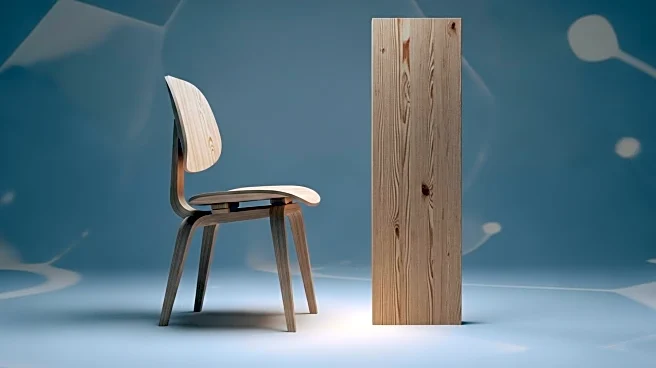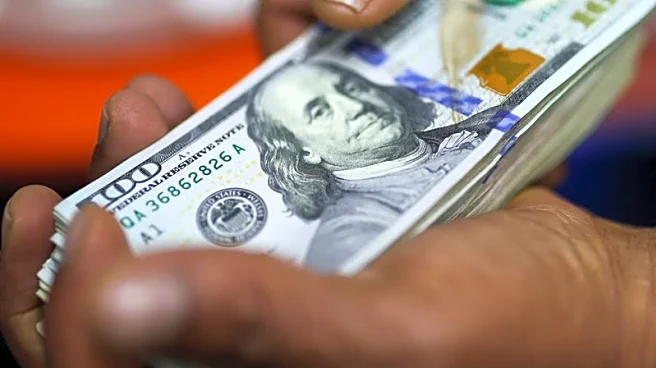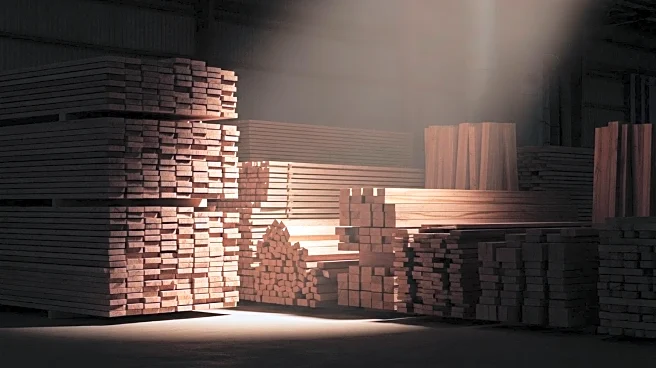What is the story about?
What's Happening?
The White House has announced new tariffs on imports of timber, lumber, and derivative products, effective October 14. This decision follows an executive order by President Trump, who cited national security concerns as the reason for the tariffs. The tariffs include a 10% global tariff on softwood lumber and a 25% tariff on certain upholstered furniture, which will increase to 30% on January 1. The move aims to bolster the American wood industry, which is reportedly facing threats from foreign imports. The tariffs are part of a broader strategy to protect U.S. manufacturers and promote onshoring of production.
Why It's Important?
The imposition of these tariffs is significant as it reflects the administration's ongoing efforts to protect domestic industries from foreign competition. The tariffs could lead to increased costs for importers and potentially higher prices for consumers. However, they are also expected to provide a boost to U.S. manufacturers by reducing import price competition. The decision may also impact international trade relations, particularly with countries like the United Kingdom, the European Union, and Japan, which have been granted more favorable tariff terms. The tariffs could lead to increased government revenue but may also result in trade negotiations to mitigate their impact.
What's Next?
As the tariffs take effect, importers may need to adjust their pricing strategies, potentially negotiating with foreign suppliers or passing costs onto consumers. The U.S. government may engage in further trade discussions with affected countries to address the tariffs' impact. The long-term effects on the U.S. wood industry and international trade dynamics will be closely monitored.
AI Generated Content
Do you find this article useful?
